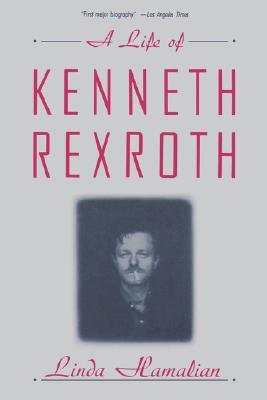Kenneth Rexroth (1905-1982) may well be the greatest unread writer America has ever produced, and certainly among the most influential. Much postwar nonacademic poetry owes its origins, its way of perceiving the world as an object of lyrical meditation, and its fluid idiom to standards Rexroth set in such major works as “The Homestead Called Damascus” and “The Phoenix and the Turtle.” Many contemporary poets, among them Gary Snyder, Allen Ginsberg, and Wendell Berry, figure as his direct descendants.
As much as Ezra Pound and T.S. Eliot, Rexroth helped revive an interest in classical literature and Chinese and Japanese poetry, and his translations, notably One Hundred Poems from the Chinese and Poems from the Greek Anthology, remain standards in their respective fields. Rexroth informed any number of social movements as well, from the Industrial Workers of the World to the antiwar activism of the 1960’s and 1970’s, and he lived the defiantly unfettered life of an anarchist artist, first in the bohemian Greenwich Village and Chicago of the 1920’s and 30’s, and later in San Francisco.
Although he is inarguably central to 20th-century American literary and intellectual history, Kenneth Rexroth’s life and work remain little known. Like his near-contemporary and peer Edmund Wilson, he is only occasionally taught in the academy, and the critical and biographical work devoted to him has until now been all of an afternoon’s reading. Linda Hamalian’s newly published life of Kenneth Rexroth stands as a needed corrective, and is a welcome addition to the study of recent American letters.
Rexroth was born in the river country of north-central Illinois at a time when the Civil War and abolitionism were objects of living memory; his family could easily have figured in the pages of Spoon River Anthology. His early life was shaped by the fashions of free love, industrial socialism, and avant-garde art that radiated from the metropolis of Chicago into the surrounding countryside; following the death of his parents, the teenaged Rexroth dropped out of school (he would never earn an academic degree of any sort) and plunged into the heart of that exciting culture, befriending such men as G.K. Chesterton (who lived briefly in Chicago) and Samuel Putnam. Hamalian’s account of Rexroth’s early years is far and away the best part of her book, for in his untrustworthy Autobiographical Novel Rexroth grandly glamorized his adolescence as a petty criminal, bookish period that would have done François Villon proud. Rexroth’s Memoir is a seductive book, however, and Hamalian now and again is too credulous of Rexroth’s account of events, accepting as fact an unlikely romance with a “Navajo princess” and other signal moments that were surely the inventions of a youthful storyteller who nursed his fictions into old age.
For readers who regard Kenneth Rexroth as an intellectual hero, as I do, some of Linda Hamalian’s findings will be disturbing: a series of adulterous affairs that broke one marriage after the next, a usually concealed but unnerving addiction to alcohol, a violent temper that wormed its way through the soul of this self-professed pacifist and conscientious objector, and a fondness for wild experimentation in matters of religion and ethics, which often left Rexroth without a center. (Rexroth supplemented his seminarian Catholicism with a diet of Zen Buddhism, Confucianism, and Hinduism, and arrived at his own sort of faith, one flexible enough to accommodate his need to wander both temporally and spiritually.)
These darker aspects are nowhere better demonstrated than in Rexroth’s five-decade correspondence with James Laughlin, his publisher at New Directions. As Lee Bartlett’s edition makes clear, Laughlin often felt the sting of Rexroth’s daily worries. Most writers regard their publishers with mixed trust, but few would dare heap the sort of fantastic accusations that Rexroth often did on Laughlin, as in this letter of April 16, 1965:
Your letter is the most insulting I have ever received from a publisher. It is not only insulting. It is fatuous, pusillanimous and stingy. These are the symptoms of senility, but now they have overwhelmed you. . . . What I want now is a quit-claim on all books of mine that you publish. . . . A man who is pathologically parsimonious is a dangerous man to do business with. By refusing to function as a businesslike publisher in your dealings with me but as a contemptuous dilettante indulging one of his “crazies,” you have cost me a small fortune.
All this because Laughlin had dared ask for a reasonable sample of the manuscript of Rexroth’s memoirs before offering a contract. In any event, Rexroth followed his outbursts with importunate apologies, often posted the same day, and Laughlin remained one of the poet’s closest friends and confidants, for which he surely deserves a place in the niche of heaven reserved for editors.
Artists are often more renowned for the tempestuous and intemperate quality of their lives than for their work. Hamalian sensibly resists the morbid impulse to dwell on Rexroth’s less attractive moments save as they figure in the makeup of the whole man, and she rightly spends most of her pages addressing the qualities that afford him a permanent—if still too little known—place in American writing. She provides an expert genealogy of Rexroth’s literary descendants, and she suggests that the writer’s contributions to poetry, social and literary criticism, and verse drama will continue to exercise their influence on American letters.
[A Life of Kenneth Rexroth, by Linda Hamalian (New York: W.W. Norton) 444 pp., $25.00]

[Kenneth Rexroth and James Laughlin: Selected Letters, Edited by Lee Bartlett (New York: W.W. Norton) 292 pp., $27.50]

Leave a Reply